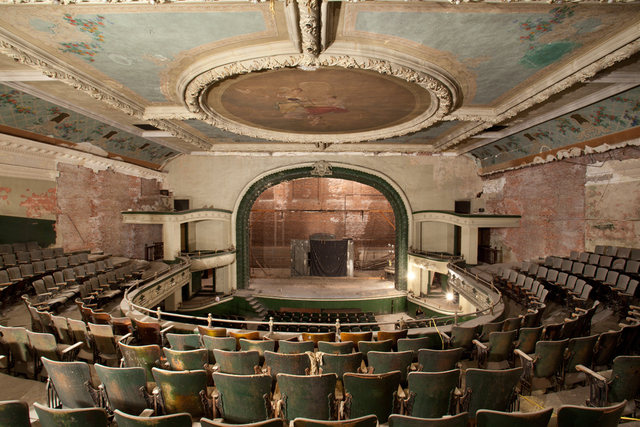Beginnings – 1950s
Surrounded by the disintegrating relics of New Bedford’s once prosperous past, the Seamen’s Bethel, Mariners Home and Whaling Museum were the only historic buildings standing tall in New Bedford’s Waterfront District. At a time when urban renewal meant demolition, not restoration, the outlook for saving the city’s architectural history was bleak.
An independent study of 70 waterfront district buildings determined that 39 we historically exceptional, and a group of passionate citizens set out to engage business leaders, civic leaders and the population in one of the largest historic preservation projects America had ever seen. What was then a volunteer Historic Area Committee became the Waterfront Historic Area League (WHALE), a recognized nonprofit in 1962.
It was one of our country’s earliest attempts to preserve an entire commercial district for use by local businesses.
“We didn’t want to turn New Bedford’s waterfront into a big outdoor museum. Our idea was to showcase the working waterfront. The businesses would stay. We just wanted to keep the buildings around them from falling.”
George Perkins
Whale President, 1962 – 1966
A WHALE proposal of alternative pathways and architectural renderings of a plaza-like area leading from the historic district to the waterfront were never given serious consideration. So, just ahead of the wrecking ball, WHALE’s directors and generous friends purchased buildings at their own personal risk and saved many. But they couldn’t save them all, nor the surrounding neighborhood.
Today, the buildings WHALE moved out of the highways path to locations inside the historic district are thriving businesses and residences and are perfectly restored architectural reminders of the many buildings that were lost.

“WHALE began when a few people saw something terrible about to happen. WHALE was one step ahead of the wreckers – and sometimes behind.”
Sarah Delano
WHALE President 1966- 1982.
A vision for a Waterfront Historic District was first formed in a thesis paper written by John Bullard as a MIT graduate student. His advisor called it “impractical and idealistic,” and he wasn’t wrong, but he hadn’t anticipated a fortuitous shift in Washington with the creation HUD’S Community Development Act of 1974. In the first 3 years of the block grant program, with support from Mayor Markey, $20 million was invested in New Bedford’s Waterfront Historic District.
John Bullard led the creation of a 40C Historic District and navigated deftly through city politics, found consensus amongst opposing factions and mollified concerned business owners. Over the next three years, WHALE preserved New Bedford’s historic district and sold 27 restored buildings to new owners for new uses: warehouses were transformed into offices, banks morphed into restaurants, and houses reemerged as shops. The streets were re-cobbled, sidewalks rebuilt, and lampposts installed, all designed to historically accurate (and elegant) specifications.

“New Bedford saved more it its architectural past and made it work perhaps better than any other city in the U.S. “
Annette Downing
Expert historic preservationist and consultant
Restoration in the Waterfront Historic District sparked a contagion of restoration and development throughout the city. A Downtown Action Committee was formed to oversee the revitalization of New Bedford’s shopping district. Brick walkways, facade facelifts, period lampposts, landscaping, benches, and awnings replaced broken windows and cracked sidewalks. Unfortunately, retail trends at the time were toward suburban shopping malls, and the downtown district never took off as hoped.
For the first time, WHALE included neighborhood restoration and revitalization as a core tenant in its mission, and saved an entire block of seven Gothic, Greek Revival and Federal houses in the North End. Historic buildings along County Street were restored, including the glorious Grinnell Mansion which became the Glass Museum and the now cherished Rotch-Jones-Duff House and Gardens.
The most ambitious project of the time was the restoration of the Zeiterion Theater. Built in 1923 by the Zeitz brothers as a vaudeville house, by 1980 it was last remaining theater space downtown. Its condition was abysmal when WHALE stepped in. Restoration began in 1982 with a team of volunteers stripping off molded wood paneling, pulling sodden carpeting and shoveling out the sub-basement.
Today, forty-plus years later, the Zeiterion delivers nothing but fun to New Bedford. The steady lineup of nationally famed and locally beloved performers and performances have played a major role in igniting New Bedford’s arts and culture scene.

… WHALE cared more about the City of New Bedford than for preservation itself . . . It was more important to restore buildings and reintroduce them into the mainstream of the community.
Tom Bucar
WHALE President, 198??






























